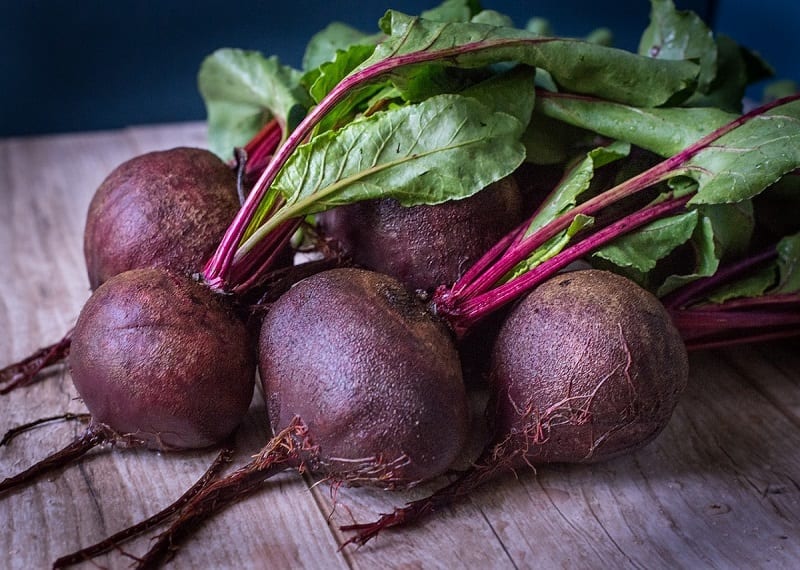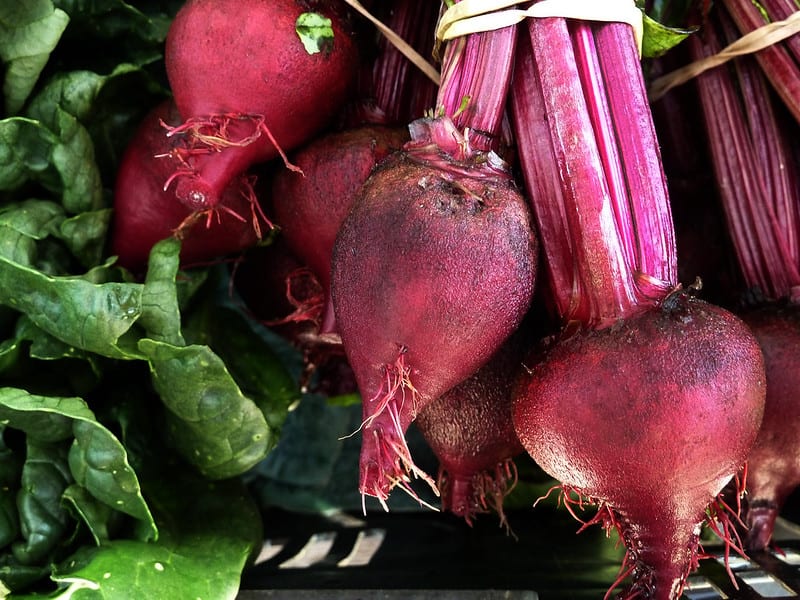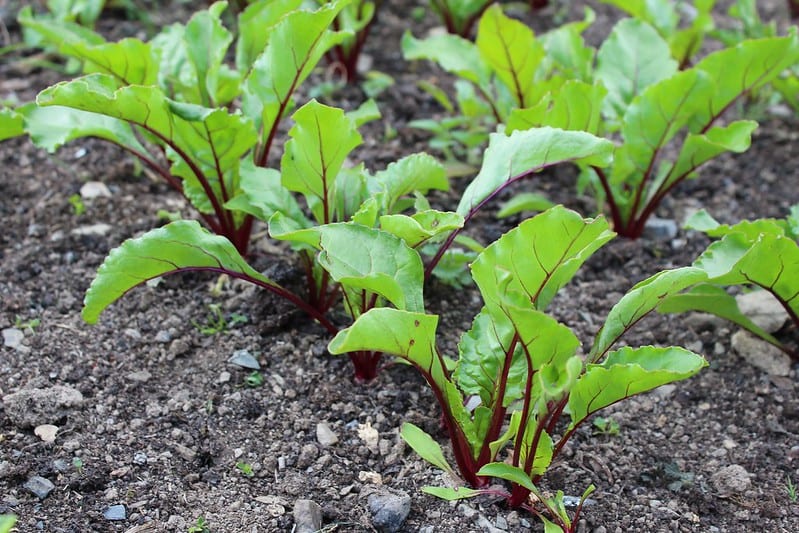In times of scarcity or high demand, we can’t always rely on supermarkets to provide us with enough to eat. If you look back to the world wars, governments encouraged households to grow their own produce to supplement what the state could provide.
If you’re aiming toward a measure of self-sufficiency, then you should consider the easiest, fastest growing vegetables and fruits to get you started.

Why Beets?
Contents
Beets are among the easiest vegetables you can grow. They’re almost never troubled by pests or disease. Beetroots are also an excellent source of fiber, folate (vitamin B9), manganese, potassium, iron, and vitamin C.
Beet plants don’t need staking, pruning, or fussing and you can harvest them in a relatively short amount of time. You can eat their green tops, too, for added nutrition.
Beets are a cool season crop. If you are new to gardening, look for bolt-resistant varieties, which have less of a chance of maturing too quickly in warm weather.
Here’s how to plant, grow, and harvest beets in your backyard.
Sun, Soil, and Seasons
Beets are adapted to grow in cool temperatures, making them a perfect vegetable to plant both in spring and late summer. They grow best with full sun in loamy, acid soils with pH levels ranging between 6.0 and 7.5.
If your soil is heavy clay, rocky, alkaline, or hard, mix in an inch or so of compost. Good Housekeeping suggests adding a bit of wood ash, too, if handy, as the potassium in wood ash enhances root growth.

(Photo: Liz West/Flickr)
Planting Beets
Start your first round of beets in early spring, as soon as the soil is workable. Plant the seeds about 1 inch deep and 3 to 4 inches apart. You can make successive plantings every 2 to 3 weeks until mid-summer.
Successive plantings are possible as long as daytime temperatures don’t exceed 24°C. In soil that’s at least 10°C, the seeds will germinate within 5 to 8 days. In colder soil, germination may take up to 2 to 3 weeks.
Mulch your patch with a layer of grass clippings, shredded leaves, or straw to help keep the moisture consistent. That’s essential for uniform root growth.
Be sure to mulch well in spring to protect your beets from unexpected hot spells.

Caring for Your Beets
Each wrinkled beet seed is actually a cluster of 2 to 4 seeds. You will need to thin the young plants to 3 to 4 inches apart once the greens get to be about 4 inches tall. Pinch or cut off the leaves. Pulling them out of the ground may disturb the roots of nearby seedlings.
Mulch and water your beet patch regularly. The plants will require about 1 inch of water per week. Beets need to maintain plenty of moisture.
You should weed your patch as needed but be gentle. Beets have shallow roots that are easily disturbed.

Harvesting Beets
You can harvest the beet greens at almost any time, beginning when thinning seedlings. Take one or two mature leaves from each plant, until the leaf blades are more than 6 inches tall and become tough.
Your beet roots should be ready for harvest within 55 to 70 days, depending on the variety. For baby beets, harvest when the root is no more than 1 or 2 inches in diameter.
Cook both the leaves and the roots – all parts of the plant are delicious. But if you want the most from your garden space, wait until the root has extended to several inches in diameter.
Depending on the variety, most beets will still be tender and delicious, even when the root measures 4 or 5 inches across, according to Gardener’s.
Here’s a quick video…








